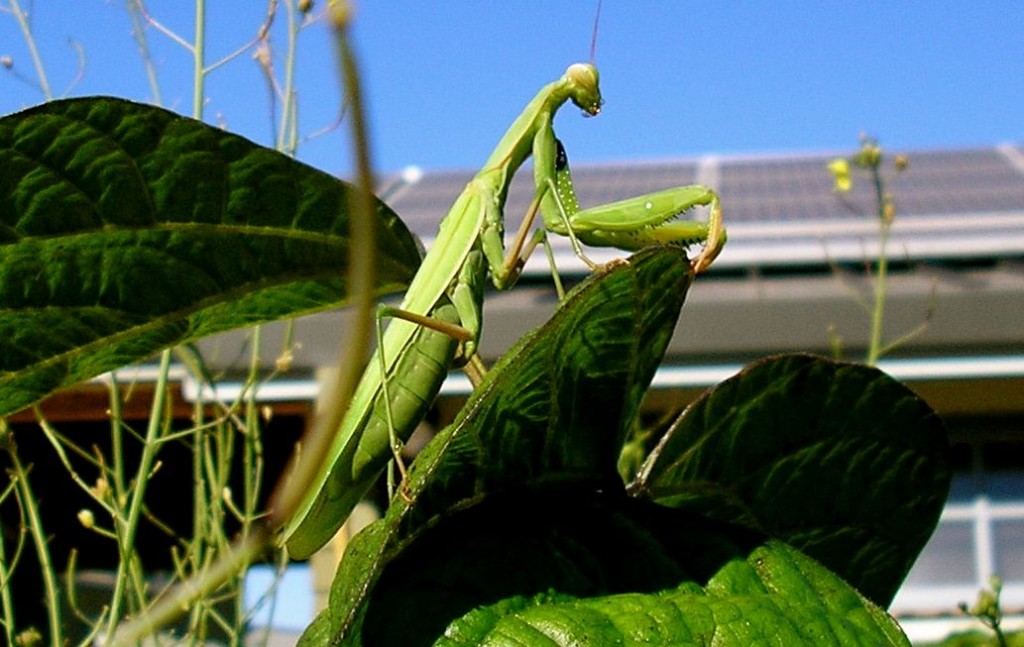As I was harvesting the green beans this morning I noticed this noble praying mantis. I was thrilled to see this beneficial insect in the garden. I have seen a lot of garden predators this year, from this fellow to the gopher snake that has a den in my back yard.
This text is from: http://www.insecta-inspecta.com/mantids/praying/ When at rest, the mantis’ front forelegs are held up together in a posture that looks like its praying. These front legs are equipped with rows of sharp spines used to grasp its prey. They wait unmoving and are almost invisible on a leaf or a stem, ready to catch any insect that passes. When potential prey comes close enough, the mantis thrusts its pincher-like forelegs forward to catch it. The mantid bites the neck of its prey to paralyze it and begins to devour it. The mantis almost always starts eating the insect while it’s still alive, and almost always starts eating from the insect’s neck. This way, the mantis makes sure that the insect’s struggle stops quickly. Praying mantises eat insects and other invertebrates such as other mantises, beetles, butterflies, crickets, grasshoppers, and even spiders. The praying mantises also eat vertebrates such as small tree frogs, lizards, mice and hummingbirds.

Leave a Reply
You must be logged in to post a comment.